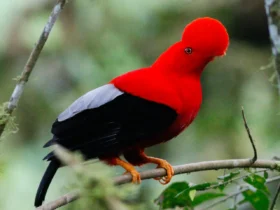Finches are a diverse group of small to medium-sized passerine birds belonging to the family Fringillidae. They are known for their unique beak shapes and their adaptability to various habitats around the world.
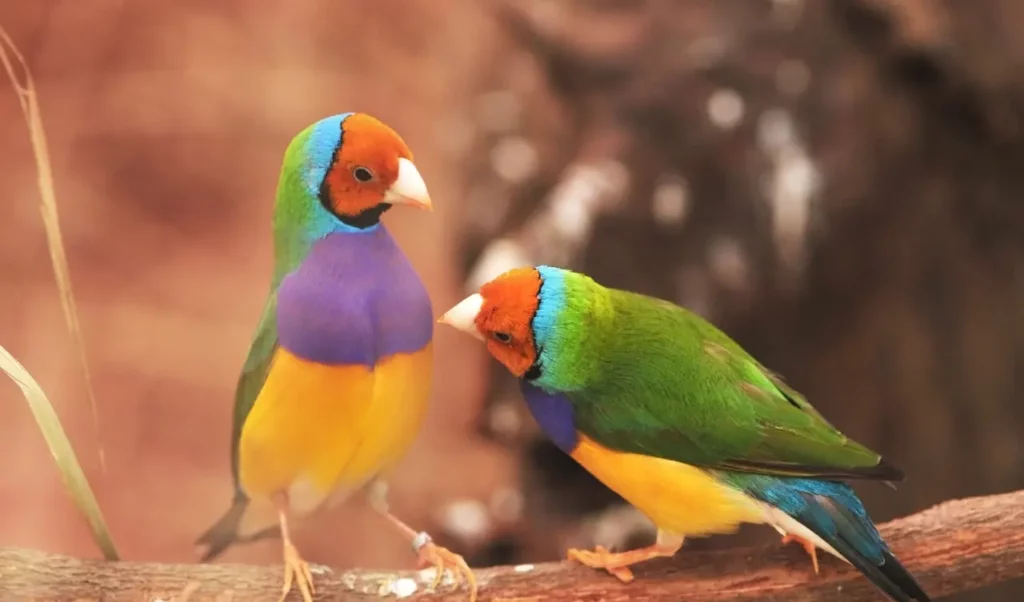
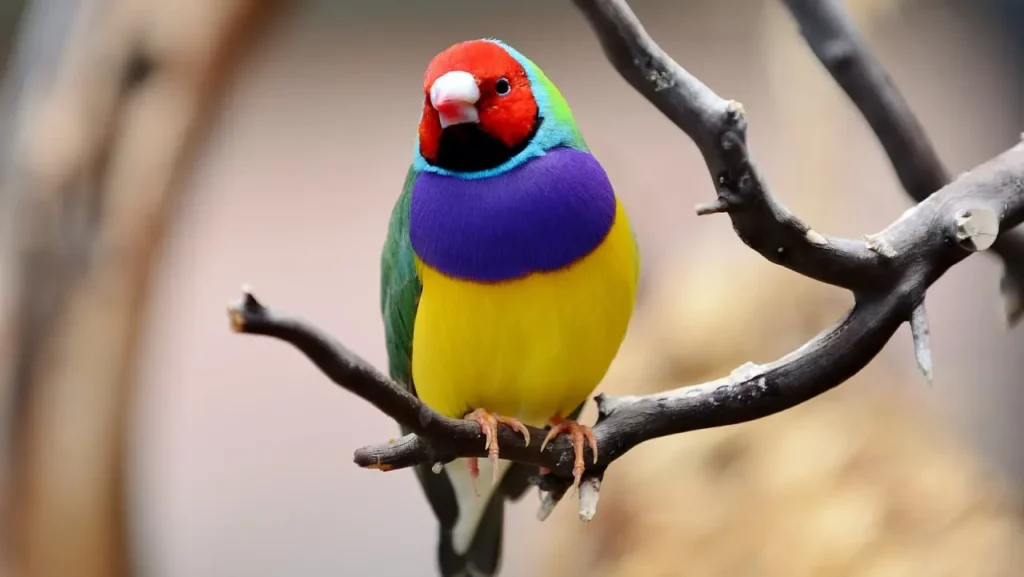
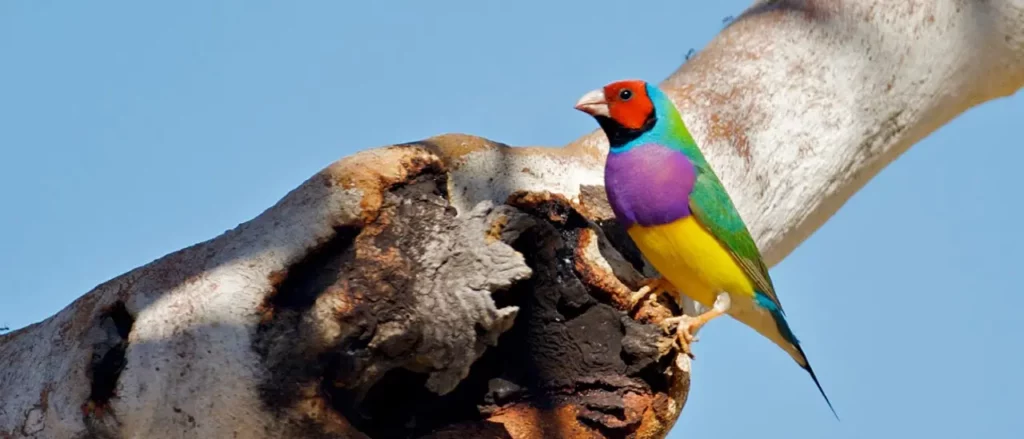
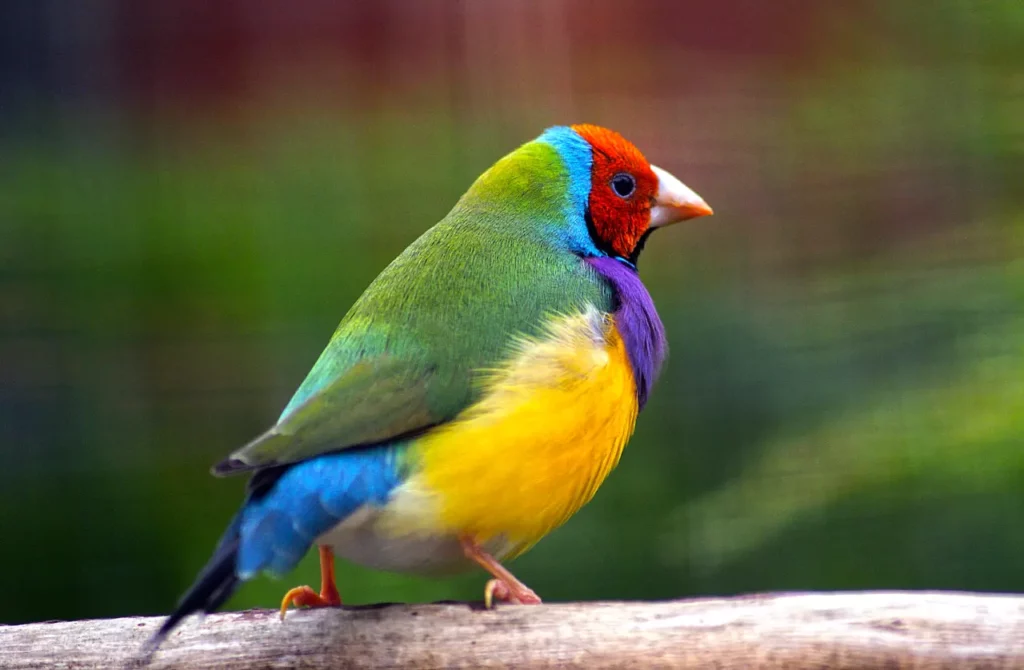
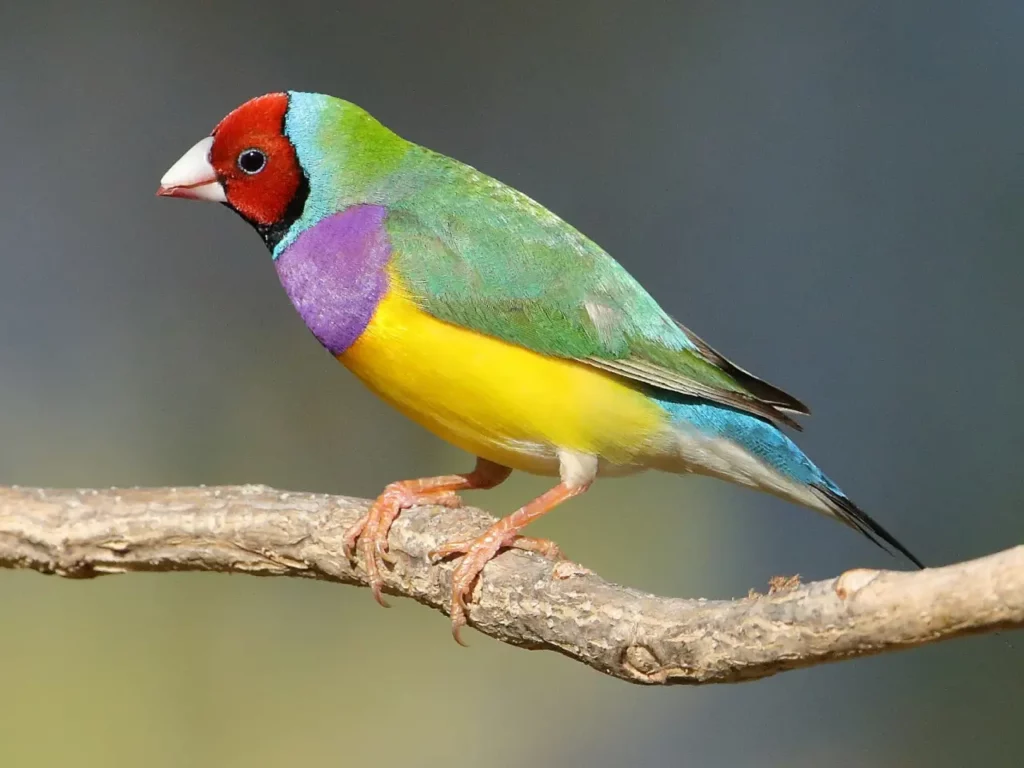
Here is some information about finches:
Physical Characteristics: Finches come in various shapes, sizes, and colors. They typically have stout bodies, short legs, and strong, conical beaks. The shape and size of their beaks vary depending on their diet and feeding habits. For example, species that primarily feed on seeds may have robust, thick beaks, while those that consume insects might have finer, more pointed beaks.
Diet: Finches are primarily granivorous, meaning they predominantly feed on seeds. They have specialized beaks that allow them to crack open and extract the contents of various seeds. However, some finch species may have more diverse diets, including fruits, insects, nectar, and even small vertebrates.
Distribution: Finches are found in various habitats worldwide, with a wide distribution across continents. They can be found in North and South America, Europe, Africa, Asia, and the Pacific Islands. Different species of finches have adapted to specific ecological niches, ranging from grasslands and forests to deserts and alpine regions.
Adaptability and Speciation: Finches are known for their remarkable adaptability, and they have been successful in colonizing new environments. This adaptability has led to the evolution of many distinct finch species in isolated habitats. One famous example is the Galápagos finches observed by Charles Darwin during his voyage on the HMS Beagle. These finches played a significant role in shaping Darwin’s theory of evolution by natural selection.
Behavior: Finches are social birds, and many species form flocks during various parts of the year, particularly during non-breeding periods or migration. They are often highly vocal, with many species producing a variety of calls and songs. The songs are essential for communication, attracting mates, and establishing territories.
Breeding and Nesting: Finches typically build cup-shaped nests using grasses, twigs, and other plant materials. They lay clutches of eggs, and both parents are usually involved in incubating the eggs and caring for the chicks. Depending on the species, the breeding season can vary, and some finches may raise multiple broods in a year.
Notable Species: Some well-known finches include the House Finch (Haemorhous mexicanus) and the American Goldfinch (Spinus tristis) in North America, the European Greenfinch (Chloris chloris) in Europe, the Gouldian Finch (Erythrura gouldiae) in Australia, and the Zebra Finch (Taeniopygia guttata) native to Australia and Indonesia. The iconic Darwin’s finches, native to the Galápagos Islands, are also of great scientific significance.
Conservation: While many finch species have stable populations, some are facing threats due to habitat loss, invasive species, and changes in climate. Conservation efforts focus on protecting their habitats, especially in areas where they are endemic or face particular challenges.
In conclusion, finches are a diverse and fascinating group of birds with unique adaptations and behaviors. Their ability to thrive in various habitats and their role in scientific studies of evolution make them significant and valued members of the avian world.
Types of Finche birds
Finches are a diverse group of small to medium-sized birds belonging to the family Fringillidae. They are found on almost every continent and are known for their varied beak shapes, vibrant plumage, and beautiful songs. Here are some types of finches:
- House Finch (Haemorhous mexicanus): Native to North America, the House Finch has a brownish plumage with red or orange markings on the males. They are commonly found in urban and suburban areas.
- American Goldfinch (Spinus tristis): Also known as the Eastern Goldfinch, it is native to North America. The males have bright yellow plumage with black markings during the breeding season.
- European Goldfinch (Carduelis carduelis): Native to Europe, North Africa, and parts of western Asia, the European Goldfinch has a vibrant red face, a black and white head, and a yellow stripe on its wings.
- Zebra Finch (Taeniopygia guttata): Originally from Australia, the Zebra Finch has a distinctive pattern of black and white stripes on its chest and belly. They are popular as pets due to their playful and social nature.
- Gouldian Finch (Erythrura gouldiae): Native to Australia, the Gouldian Finch is known for its stunning and varied plumage colors, including red, yellow, green, and blue. They are highly sought after by bird enthusiasts.
- Purple Finch (Haemorhous purpureus): Native to North America, the Purple Finch has a purplish-red plumage, which is more vibrant in males during the breeding season.
- Java Sparrow (Lonchura oryzivora): Also known as Java Finch, it is native to Java and other Indonesian islands. It has a grayish-black head, pink cheeks, and a white belly.
- Canary (Serinus canaria): Originally from the Canary Islands, Canaries are well-known songbirds kept as pets for their melodious singing. They come in various colors and varieties.
- African Silverbill (Lonchura cantans): Native to sub-Saharan Africa, the African Silverbill has a silvery-gray plumage with a reddish face. They are small and social birds often kept in aviaries.
- Red-headed Finch (Amadina erythrocephala): Native to parts of sub-Saharan Africa, the Red-headed Finch has a striking red head and breast with brownish-gray body feathers.
- African Firefinch (Lagonosticta rubricata): Found in sub-Saharan Africa, the African Firefinch has a reddish-brown plumage with bright red patches on its face and belly.
- Chestnut Munia (Lonchura atricapilla): Also known as Black-headed Munia or Black-headed Mannikin, this finch is native to parts of Southeast Asia and has a black head with a chestnut-brown body.
- Blue-capped Cordon-bleu (Uraeginthus cyanocephalus): Native to Africa, the Blue-capped Cordon-bleu has a bright blue cap on its head, a brownish-gray body, and a distinctive red beak.
- Spice Finch (Lonchura punctulata): Native to South Asia and Southeast Asia, the Spice Finch has a brownish-gray plumage with a spotted pattern and a red beak.
- Yellow-fronted Canary (Serinus mozambicus): Found in parts of southern Africa, the Yellow-fronted Canary has a bright yellow head and belly with a grayish-brown back.
- Yellow-crowned Bishop (Euplectes afer): Native to sub-Saharan Africa, the Yellow-crowned Bishop has a bright yellow crown on its head and a brownish-black body.
- Red-billed Quelea (Quelea quelea): Native to Africa, the Red-billed Quelea is one of the most numerous bird species on Earth. It has a reddish beak and a brownish-black plumage.
- Green-winged Pytilia (Pytilia melba): Found in parts of sub-Saharan Africa, the Green-winged Pytilia has a green patch on its wings, a red face, and a yellowish-brown body.
- Society Finch (Lonchura domestica): Also known as Bengalese Finch or Japanese Movchen, this domesticated finch is a popular cage bird with a variety of color mutations.
- White-rumped Munia (Lonchura striata): Native to South Asia and Southeast Asia, the White-rumped Munia has a white belly and rump, a brown back, and a distinctive red beak.
- Diamond Firetail (Stagonopleura guttata): Native to Australia, the Diamond Firetail has a distinctive black-and-white pattern on its tail feathers and a red patch on its face. It is known for its beautiful colors and is found in grassy habitats.
- Star Finch (Neochmia ruficauda): Found in northern Australia, the Star Finch has a bright red face and a colorful pattern of white, black, and yellow on its body and wings.
- Gray-crowned Rosy-Finch (Leucosticte tephrocotis): Native to mountainous regions of North America, the Gray-crowned Rosy-Finch has a gray head and a rosy-pink body, particularly on its belly and wings.
- Double-barred Finch (Taeniopygia bichenovii): Native to Australia, the Double-barred Finch has distinctive black and white bars on its belly and wings, with a brownish-gray back.
- Black-faced Finch (Poephila suahelica): Found in northern Australia and Papua New Guinea, the Black-faced Finch has a black face, a white underbelly, and a grayish-brown body.
- Black-throated Finch (Poephila cincta): Native to Australia, the Black-throated Finch has a black throat, a white underbelly, and a brownish-gray body.
- Long-tailed Finch (Poephila acuticauda): Found in Australia and parts of Papua New Guinea, the Long-tailed Finch has a long and pointed tail, a brownish-gray body, and a red face.
- Red-headed Parrot Finch (Erythrura cyaneovirens): Native to parts of Indonesia, the Red-headed Parrot Finch has a bright red head, a green back, and a blue underbelly.
- Yellow-faced Parrot Finch (Erythrura hyperythra): Found in Southeast Asia and parts of Indonesia, the Yellow-faced Parrot Finch has a yellow face, a green back, and a blue underbelly.
- Blue-faced Parrot Finch (Erythrura trichroa): Native to Australia, the Blue-faced Parrot Finch has a blue face, a green back, and a blue underbelly.
- Crimson Finch (Neochmia phaeton): Native to northern Australia and nearby islands, the Crimson Finch has a bright crimson plumage with a black face and wings.
- Painted Finch (Emblema pictum): Found in parts of Australia, the Painted Finch has a colorful pattern of black, white, and red on its head and body.
- Lavender Waxbill (Estrilda caerulescens): Native to parts of sub-Saharan Africa, the Lavender Waxbill has a lavender-blue plumage with a red bill.
- Green Avadavat (Amandava formosa): Also known as Green Munia, it is native to South Asia and has a vibrant green plumage with a red beak.
- Yellow-breasted Waxbill (Amandava subflava): Found in parts of Africa, the Yellow-breasted Waxbill has a yellow belly and a red face.
- Bronze Mannikin (Spermestes cucullata): Native to sub-Saharan Africa, the Bronze Mannikin has a bronze-colored plumage with a black head and white spots on the wings.
- Shaft-tail Finch (Poephila acuticauda): Found in Australia, the Shaft-tail Finch has a long and pointed tail, a brownish-gray body, and a red face.
- Nutmeg Mannikin (Lonchura punctulata): Native to South Asia and Southeast Asia, the Nutmeg Mannikin has a brownish-gray body with white spots and a red beak.
- White-headed Mannikin (Lonchura maja): Found in parts of Southeast Asia, the White-headed Mannikin has a white head, a brownish-gray body, and a red beak.
- Green Twinspot (Mandingoa nitidula): Native to parts of Africa, the Green Twinspot has a green body with black spots and a red face.
- Spice Finch (Lonchura punctulata): Also known as Scaly-breasted Munia or Nutmeg Mannikin, this finch species is native to South Asia and Southeast Asia. It has a brownish-gray plumage with a scalloped or spotted pattern.
- Saffron Finch (Sicalis flaveola): Native to South America, the Saffron Finch has a bright yellow plumage with an orange face. It is often found in open grasslands and gardens.
- Yellow-rumped Finch (Erythrura tricolor): Found in parts of Indonesia and Papua New Guinea, the Yellow-rumped Finch has a bright red face and a yellow rump.
- White-capped Munia (Lonchura ferruginosa): Native to parts of Southeast Asia, including the Philippines and Indonesia, the White-capped Munia has a white cap on its head and a brownish-gray body.
- Bronze-winged Mannikin (Lonchura cucullata): Found in parts of Southeast Asia and the Indian subcontinent, the Bronze-winged Mannikin has a bronze-colored patch on its wings and a brownish-gray body.
- Red-headed Finch (Amadina erythrocephala): Native to parts of sub-Saharan Africa, the Red-headed Finch has a bright red head and breast with a brownish-black body.
- Violet-eared Waxbill (Uraeginthus granatina): Found in parts of Africa, the Violet-eared Waxbill has a bright blue plumage with a violet patch on its ear coverts.
- Yellow-bellied Waxbill (Coccopygia quartinia): Native to parts of Africa, the Yellow-bellied Waxbill has a yellow underbelly and a grayish-brown body.
- Java Sparrow (Lonchura oryzivora): Also known as Java Finch or Rice Bird, this finch is native to Java and other Indonesian islands. It has a grayish-black head and a pinkish belly.
- Chestnut-breasted Mannikin (Lonchura castaneothorax): Found in parts of Southeast Asia, including Indonesia and Papua New Guinea, the Chestnut-breasted Mannikin has a chestnut-brown patch on its breast and a brownish-gray body.
- Red Avadavat (Amandava amandava): Native to South Asia and Southeast Asia, the Red Avadavat has a vibrant red plumage with black markings on the wings and tail.
- Chestnut Munia (Lonchura atricapilla): Also known as Black-headed Munia or Black-headed Mannikin, this finch is native to parts of Southeast Asia and has a black head with a chestnut-brown body.
- Yellow-fronted Canary (Serinus mozambicus): Found in parts of southern Africa, the Yellow-fronted Canary has a bright yellow head and belly with a grayish-brown back.
- White-bellied Canary (Crithagra dorsostriata): Native to eastern and southern Africa, the White-bellied Canary has a white underbelly with distinctive black stripes on the sides.
- Chestnut-breasted Finch (Lonchura castaneothorax): Found in parts of Southeast Asia, including Indonesia and Papua New Guinea, the Chestnut-breasted Finch has a chestnut-brown patch on its breast and a brownish-gray body.
- Cuban Grassquit (Tiaris canora): Native to Cuba, the Cuban Grassquit has a dark plumage with distinctive yellow patches on the wings.
- Yellow-billed Cardinal (Paroaria capitata): Found in parts of South America, the Yellow-billed Cardinal has a bright red plumage with a yellow bill.
- Pectoral Sparrow (Arremon taciturnus): Native to parts of South America, the Pectoral Sparrow has a brownish-gray body with a distinct black patch on its breast.
- Pintail Whydah (Vidua macroura): Found in parts of sub-Saharan Africa, the Pintail Whydah is known for its long, pointed tail feathers and striking plumage.
- Yellow-breasted Apalis (Apalis flavida): Native to parts of sub-Saharan Africa, the Yellow-breasted Apalis has a yellow underbelly with a grayish-brown back.
- Great-billed Parrot Finch (Erythrura trichroa): Found in parts of Indonesia and Papua New Guinea, the Great-billed Parrot Finch has a bright blue face, a red underbelly, and a large, distinctive beak.
- Plum-headed Finch (Aidemosyne modesta): Native to parts of Australia, the Plum-headed Finch has a bright pink head, a white underbelly, and a grayish-brown body.
- White-rumped Snowfinch (Montifringilla taczanowskii): Found in the high-altitude regions of Central Asia, the White-rumped Snowfinch has a white rump and a grayish-brown body.
- Green Avadavat (Amandava formosa): Also known as Green Munia, it is native to South Asia and has a vibrant green plumage with a red beak.
- Cinnamon Mannikin (Lonchura punctulata): Found in parts of Southeast Asia, the Cinnamon Mannikin has a cinnamon-brown plumage with a spotted pattern.
- Magpie Mannikin (Lonchura fringilloides): Native to parts of Southeast Asia, including Indonesia and the Philippines, the Magpie Mannikin has a black-and-white plumage with a distinctive white patch on the wings.
- Timor Sparrow (Lonchura fuscans): Found in parts of Southeast Asia, including Indonesia and Timor, the Timor Sparrow has a brownish-gray body and a white underbelly.
- Oriental Greenfinch (Chloris sinica): Native to parts of Asia, including China and Japan, the Oriental Greenfinch has a bright yellow plumage with a greenish tint.
- Black-bellied Firefinch (Lagonosticta rara): Found in parts of sub-Saharan Africa, the Black-bellied Firefinch has a black belly and a bright red plumage.
- Red-browed Finch (Neochmia temporalis): Native to Australia, the Red-browed Finch has a bright red face and a grayish-brown body.
- Black-faced Mannikin (Lonchura molucca): Native to parts of Southeast Asia and the Philippines, the Black-faced Mannikin has a black face, a white underbelly, and a brownish-gray body.
- Double-barred Finch (Taeniopygia bichenovii): Native to Australia, the Double-barred Finch has distinctive black and white bars on its belly and wings, with a brownish-gray back.
- Yellow-billed Cardinal (Paroaria capitata): Found in parts of South America, the Yellow-billed Cardinal has a bright red plumage with a yellow bill.
- Chestnut Munia (Lonchura atricapilla): Also known as Black-headed Munia or Black-headed Mannikin, this finch is native to parts of Southeast Asia and has a black head with a chestnut-brown body.
- White-browed Sparrow-Weaver (Plocepasser mahali): Found in parts of sub-Saharan Africa, the White-browed Sparrow-Weaver has a white eyebrow stripe and a brownish-gray body.
- Yellow-faced Munia (Lonchura chrysogaster): Native to parts of Southeast Asia and the Philippines, the Yellow-faced Munia has a yellow face and belly with a brownish-gray back.
- Red-headed Mannikin (Amadina erythrocephala): Native to parts of sub-Saharan Africa, the Red-headed Mannikin has a bright red head and breast with a brownish-black body.
- White-bellied Canary (Crithagra dorsostriata): Native to eastern and southern Africa, the White-bellied Canary has a bright yellow underbelly with distinctive black stripes on the sides.
- Brown Finch (Heteromunia pectoralis): Found in parts of Southeast Asia, including Indonesia and the Philippines, the Brown Finch has a brownish-gray plumage with a white underbelly.
- St. Helena Waxbill (Estrilda astrild): Native to St. Helena, an isolated island in the South Atlantic Ocean, the St. Helena Waxbill has a red face and belly with a brownish-gray back.
- Orange-cheeked Waxbill (Estrilda melpoda): Found in parts of sub-Saharan Africa, the Orange-cheeked Waxbill has bright orange patches on its cheeks and a brownish-gray body.
- Black-throated Finch (Poephila cincta): Native to Australia, the Black-throated Finch has a black throat, a white underbelly, and a grayish-brown body.
- Blue-capped Waxbill (Uraeginthus cyanocephalus): Native to parts of Africa, the Blue-capped Waxbill has a blue cap on its head, a reddish-brown body, and a white underbelly.
- Red-faced Pytilia (Pytilia hypogrammica): Found in parts of sub-Saharan Africa, the Red-faced Pytilia has a red face and belly with a grayish-brown body.
- Streaked Mannikin (Lonchura striata): Native to parts of Southeast Asia and the Philippines, the Streaked Mannikin has a streaked pattern on its head and body.
- Black-throated Canary (Serinus atrogularis): Found in parts of southern Africa, the Black-throated Canary has a black throat and a yellow plumage.
- Purple Grenadier (Granatina ianthinogaster): Native to parts of sub-Saharan Africa, the Purple Grenadier has a purple belly and a brownish-gray body.
- Green Twinspot (Mandingoa nitidula): Found in parts of sub-Saharan Africa, the Green Twinspot has a green body with black spots and a red face.
- Southern Red Bishop (Euplectes orix): Native to parts of sub-Saharan Africa, the Southern Red Bishop has a bright red plumage during the breeding season.
- Pearl-headed Mannikin (Lonchura griseicapilla): Found in parts of Southeast Asia and the Philippines, the Pearl-headed Mannikin has a gray head and a brownish-gray body.
- Gray-headed Silverbill (Euodice cantans): Native to parts of Southeast Asia and the Philippines, the Gray-headed Silverbill has a gray head and a brownish-gray body.
- Black-throated Canary (Crithagra atrogularis): Found in parts of southern Africa, the Black-throated Canary has a black throat and a yellow plumage.
- Yellow-rumped Seedeater (Sporophila nigricollis): Native to parts of South America, the Yellow-rumped Seedeater has a yellow rump and a black collar around its neck.
- Yellow-throated Seedeater (Sporophila nigricollis): Found in parts of South America, the Yellow-throated Seedeater has a yellow throat and a black collar around its neck.
- Yellow-crowned Bishop (Euplectes afer): Native to parts of sub-Saharan Africa, the Yellow-crowned Bishop has a yellow crown on its head and a brownish-black body.
- Red-billed Firefinch (Lagonosticta senegala): Found in parts of sub-Saharan Africa, the Red-billed Firefinch has a bright red bill and a brownish-gray body.
- White-winged Widowbird (Euplectes albonotatus): Native to parts of sub-Saharan Africa, the White-winged Widowbird has striking white wing patches during the breeding season.
- Swee Waxbill (Coccopygia melanotis): Found in parts of sub-Saharan Africa, the Swee Waxbill has a distinctive black face and a brownish-gray body.
- Fawn-breasted Waxbill (Estrilda paludicola): Native to parts of sub-Saharan Africa, the Fawn-breasted Waxbill has a fawn-colored breast and a brownish-gray body.
- Black-bellied Firefinch (Lagonosticta rara): Found in parts of sub-Saharan Africa, the Black-bellied Firefinch has a black belly and a bright red plumage.
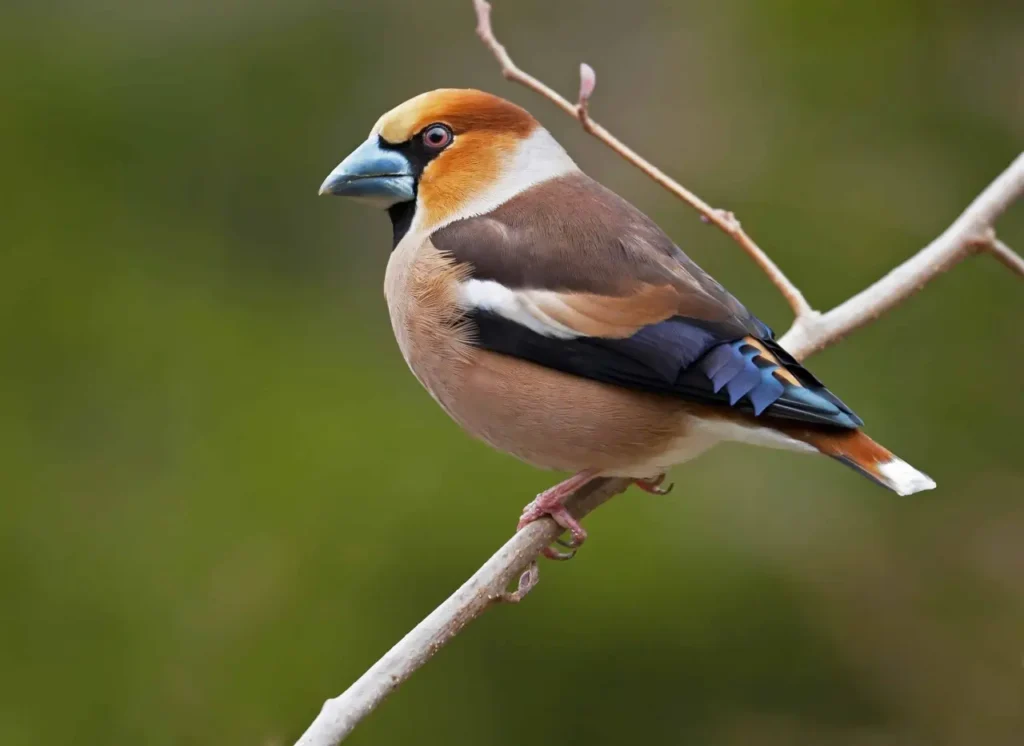
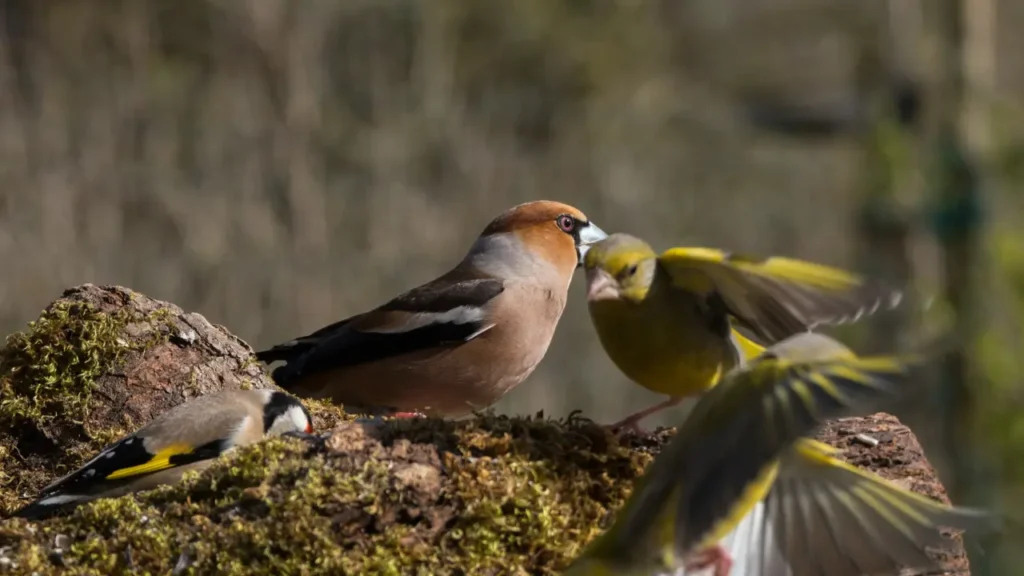
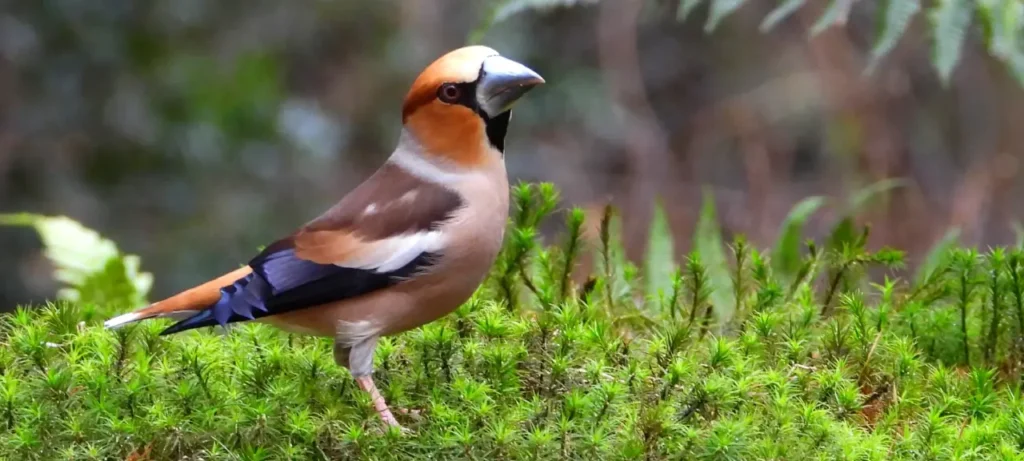
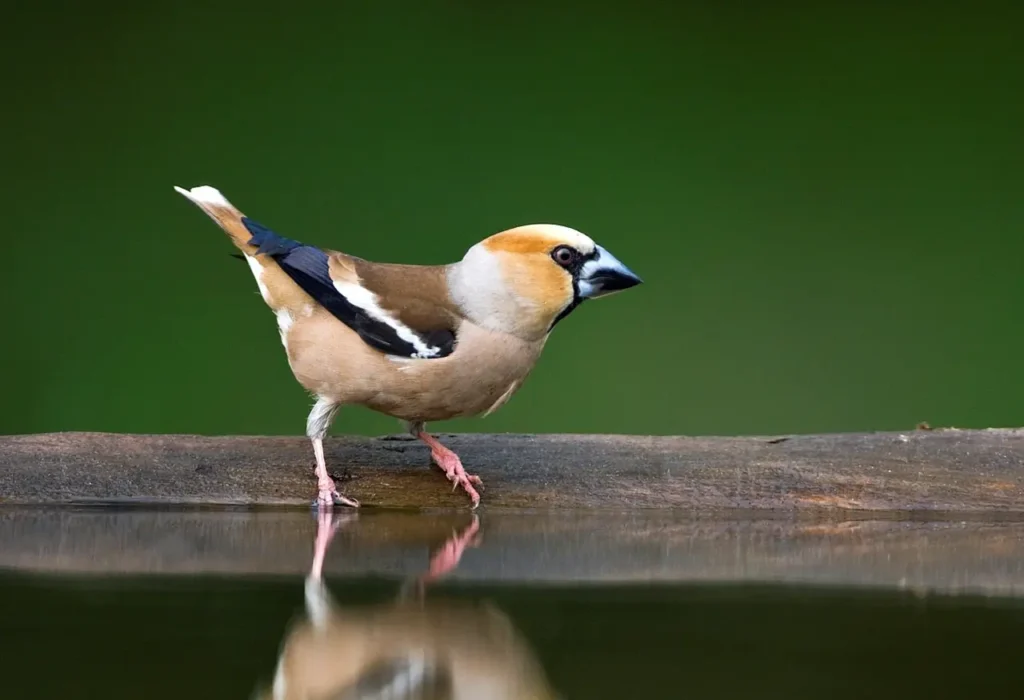
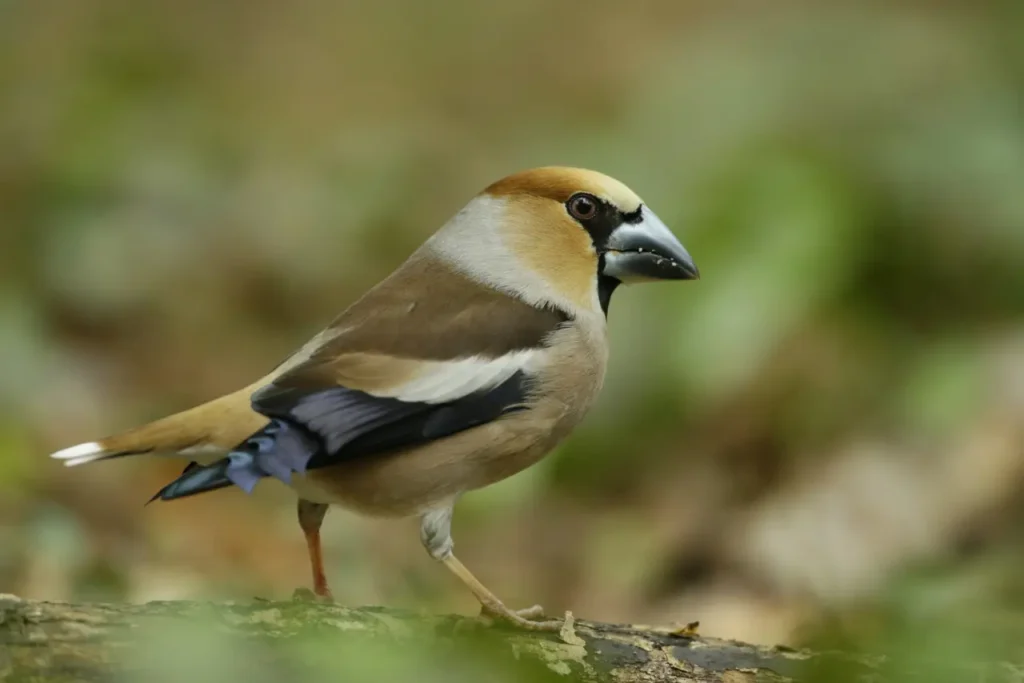
These are just a few examples of the various types of finches. Finches are a diverse and fascinating group of birds, and many of them are popular in aviculture due to their colorful plumage, beautiful songs, and charming personalities.
